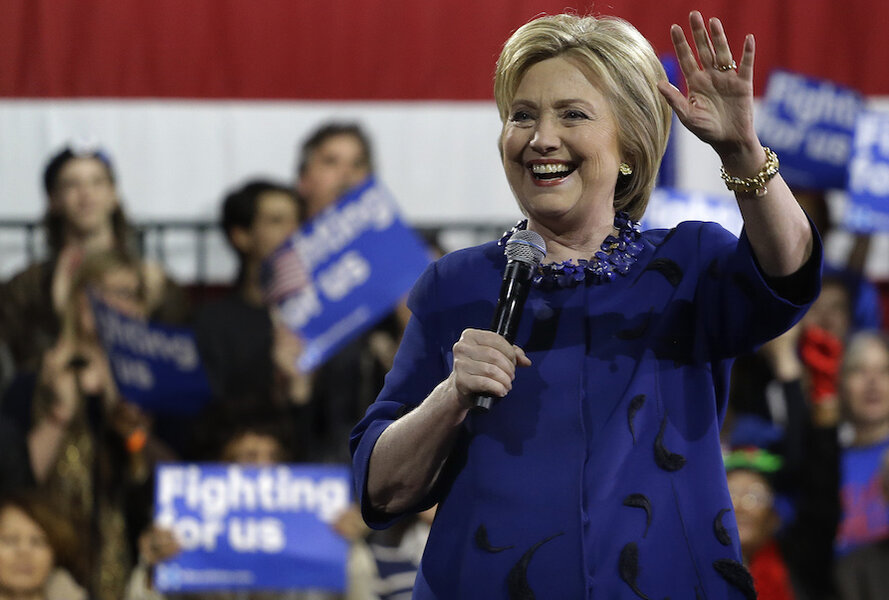What's in Hillary Clinton's tax plan?
Loading...
Democratic presidential hopeful Hillary Clinton would raise taxes on businesses and high-income households while making minimal changes to the after-tax incomes of those with low and moderate incomes, according to a new analysis by the Tax Policy Center. Overall, Secretary Clinton would boost federal revenues by $1.1 trillion over the next decade. Those changes would make the tax code more complex, especially for high-income households, and would reduce incentives to work, save, and invest.
Clinton would retain the basic structure of the current income tax, in contrast to GOP presidential candidates Marco Rubio and Ted Cruz, who would shift to a consumption-based tax. According to TPC’s analysis, Clinton’s proposal roughly achieves her goal of raising taxes only for those making more than $250,000, though how closely she hews to her promise depends on how she defines income.
Tax changes
Clinton’s tax plan increases taxes on the wealthy to pay for the middle-income kitchen table social programs she’s been promoting, such as help with college and medical costs. And by raising taxes by $1 trillion, her plan could modestly reduce the projected federal debt over the next decade—unless she spends the money on the additional middle-income tax cuts she’s promising.
On average, households would pay about $650 more in taxes in 2017 under Clinton’s proposal, a 0.9 cut in after-tax income. By TPC’s measure of cash income, which is broader than commonly used measures such as Adjusted Gross Income, those making less than about $80,000 would face very small tax hikes, averaging between $4 and $44.
Those tax increases are not due to direct tax increases on individuals. Rather they represent their share of her proposed tax increases on businesses. TPC estimates that shareholders bear 60 percent of the corporate tax, all capital owners bear 20 percent, and workers bear 20 percent.
Households making $143,000 to $296,000 would pay no more than a few hundred dollars in extra tax on average.
However, the highest-income 1 percent would face an average tax increase of about $78,000, a 5 percent reduction in their after-tax income, while the top 0.1 percent would pay $520,000 more, 7.6 percent of their after-tax income. Overall, more than three-quarters of Clinton’s tax increase would hit the top 1 percent (who make more than $732,000). The highest-income 0.1 percent of filers (who make more than $3.8 million) would pay more than half of her tax increase.
Tax hikes for high-income households
Clinton’s tax changes for individuals include new credits for family caregivers and households with high out-of-pocket medical expenses. At the same time, she’d effectively raise tax rates for high-income households by imposing a 5 percent surtax on income over $5 million, a 30 percent “Buffett rule” minimum tax on those with AGI above $1 million, and a 28 percent cap on the value of most deductions (except for the charitable deduction) and exclusions. She’d create six capital gains rates tied to the length of time investors hold assets, with a top rate of 43.4 percent (equal to the top rate for ordinary income) and she’d boost the estate and gift tax.
She’d also tax the carried interest of partners in some investment firms as ordinary income, limit the amount taxpayers can accumulate in retirement accounts, and require that investors “mark-to-market” gains or losses on derivative contracts and pay ordinary income tax rates on those gains.
Business taxes
Clinton would raise several taxes for businesses, especially multinational corporations. She’d tighten rules on tax-motivated inversions, levy an exit tax on earnings of firms that do change their legal addresses to reduce taxes, and limit the ability of firms to allocate earnings to low-tax jurisdictions while shifting costs to the U.S., where tax rates are relatively high.
She’d raise taxes on fossil fuel producers but create new tax credits for firms that hire apprentices, create profit-sharing plans for workers, or investment in community development.
The Clinton campaign told TPC that it will propose additional tax cuts for low- and middle-income households later in the campaign. However, TPC modeled only those proposals made public prior to March 3, 2016. TPC was unable to model a few of those proposals, including tax credits for caregiving and high out-of-pocket health costs. These credits would likely result in net tax cuts for most households, but also reduce the plan’s net revenue gain.
Many of the changes--such as the Buffett rule, the high-income surtax, and boost in capital gains taxes for many investments-- would effectively increase marginal tax rates. As a result, Clinton’s plan would reduce incentives to work, save, and invest. It would also make tax filing much more complicated for many. For example, rather than directly raising individual tax rates, she creates three new minimum taxes for high-income households.
In the current campaign, Clinton’s plan stands out for being so…modest. No promises of huge tax cuts or big new spending programs. And no big boost in the public debt. Of course, given the nation’s unsustainable fiscal course, moderation may not be enough.
The post Hillary Clinton Would Raise Taxes On High-Income Households By $1.1 Trillion Over 10 Years appeared first on TaxVox.





